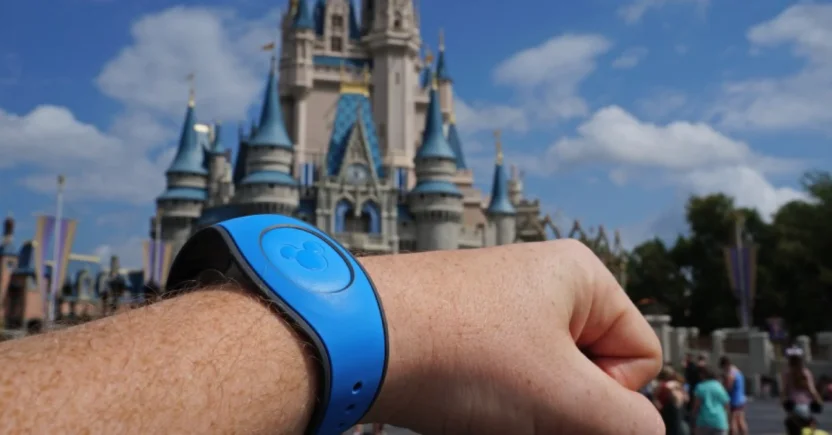Omnichannel Marketing Guide: All You Need to Know
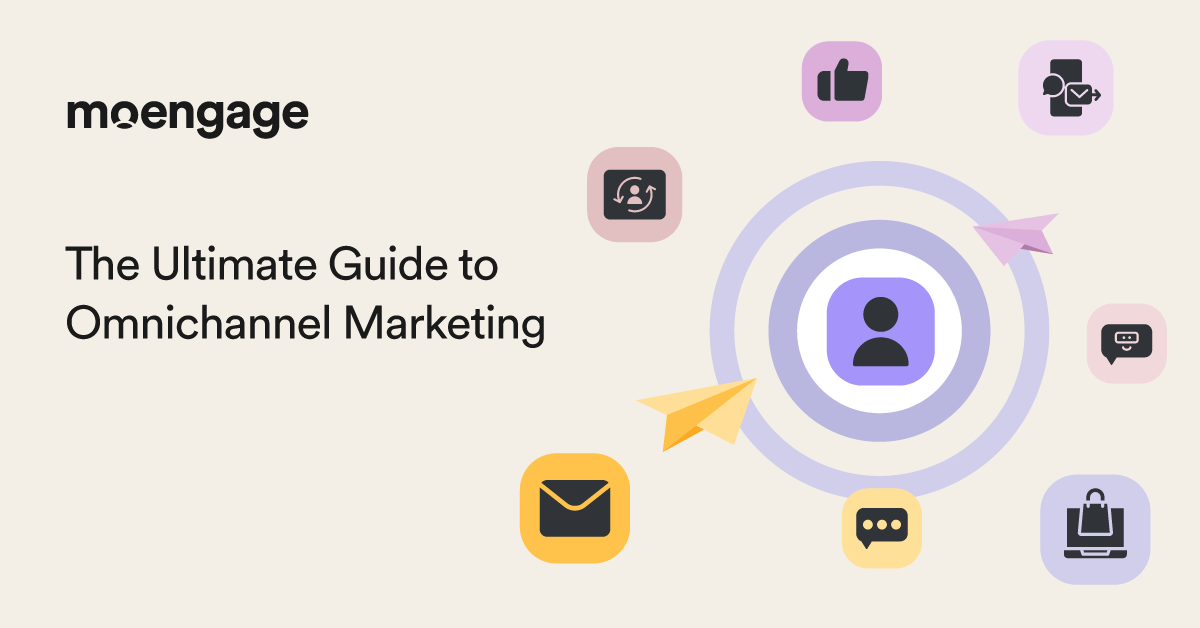
Reading Time: 15 minutes
Every modern marketing strategy is incomplete without omnichannel marketing. While it isn’t a new concept, it continues to evolve as more customers today hop from app to website to store to inbox without a second thought. With omnichannel strategies, you need to make every customer interaction feel connected, familiar, and hassle-free.
According to The State of Cross-Channel Marketing Report 2025, the most popular business objective for B2C marketers is increasing customer engagement or loyalty.
And it’s not a surprise. Delivering a seamless brand experience across every touchpoint makes it easy for customers to stick around. Whether they’re opening your emails, browsing your website, or scrolling your social feed, they should feel like your brand gets them.
Omnichannel marketing is about connecting with customers on their terms, empowering them to engage with your brand seamlessly across all channels.
Scott Brinker
Today, omnichannel is about keeping customers. In this guide, we cover what omnichannel marketing is, why it matters, and how to build a strategy that makes customers remember your brand.
Omnichannel Marketing Definition & Fundamentals
Before diving into tactics, let’s get clear on what omnichannel marketing actually means, how marketers use it in their customer engagement efforts, and how it’s different from the siloed customer experiences most brands still deliver.
If you’ve already mastered these fundamentals, feel free to skip ahead to the strategies for implementing a flawless omnichannel marketing plan.
What is omnichannel marketing?
Omnichannel marketing is the seamless integration of all your channels, online and offline, to offer consistent messaging and a unified experience to customers across touchpoints. Essentially, it means offering a continued experience to your customers from wherever they left off, regardless of the initial channel.
While siloed, fragmented customer interactions force customers to piece together the journey themselves, omnichannel connects the dots for them.
That’s the ultimate goal: a brand experience that flows naturally from one channel to another, backed by insights pulled from all touchpoints (app, SMS, website, email, physical stores, and social media) into one clear picture of your customer.
Differences in omnichannel, multichannel, and cross-channel marketing
You may have seen terms like omnichannel, multichannel, and cross-channel being used interchangeably, but there are some subtle differences between them.
Multichannel marketing involves communicating with customers across multiple channels but in a siloed way, resulting in a fragmented experience. Cross-channel marketing refers to communicating across select channels in an integrated manner. On the other hand, omnichannel marketing enables interactive and interconnected communication across all marketing channels.
Discover the differences between omnichannel vs. multichannel marketing in our comprehensive article.
How omnichannel marketing is used in customer engagement
Enhancing customer engagement is a goal for which marketers would be willing to move mountains. Omnichannel marketing can make this happen with a lot less effort. It enables marketers to prioritize a customer-centric approach, leverage data across channels, hyper-personalize by building accurate personas, and seamlessly work across teams.
Here’s how: insights from all touchpoints feed into a single view of the customer, giving you the data you need to build accurate personas and predict customer behavior. That same intelligence drives hyper-personalized messaging, so customers feel recognized. On the execution side, it breaks down silos between teams, making it easier for marketing, sales, product, and customer service to work from the same playbook.
The result is contextually connected and stickier cross-channel experiences for customers, which widen the scope for greater engagement across a diverse customer base.
Learn how you can devise effective omnichannel customer journeys that keep customers engaged.
Why is Omnichannel Marketing Important?
Transitioning to omnichannel can seem like a big shift for your brand, but what if we told you it can positively influence every aspect of your business outcomes? Read on to know why omnichannel is important.
4 benefits of omnichannel marketing
Below is a brief list of benefits to give you an overview of the importance of omnichannel.
- Greater engagement and retention: Brands that use omnichannel customer engagement strategies see 89% retention on average.
- Higher customer lifetime value (CLV): Customers who buy both in-store and online have a 30% higher lifetime value. This means omnichannel brands can enjoy a greater CLV.
- Data-led marketing: A unified experience across touchpoints allows brands to seamlessly capture customer data from various touchpoints, accurately profile customers, and hyper-personalize messaging.
- Consistent brand positioning: Consistent brand messaging across channels means cementing a strong brand identity and recall in the minds of customers.
Challenges of Omnichannel Marketing
Below are some common omnichannel challenges that can weaken your campaign’s impact if left unaddressed.
- Communication gaps: Brands risk losing their customers’ engagement and loyalty if they receive generic, one-size-fits-all messages on different channels instead of personalized and intent-driven communication that speaks to their needs.
- Data accuracy: Brands that use incomplete or inaccurate data fail to gain reliable insights, resulting in ill-targeted campaigns.
- Team silos: When your teams do not efficiently share insights, data, and goals, it may lead to execution delays and customers experiencing fragmented brand interactions. What can really help is effective omnichannel marketing software.
- Real-time engagement: Customers are unlikely to engage and interact with brands that respond with a lag and lack contextually relevant messaging.
- Cross-channel friction: Inconsistent or disconnected messaging between your brand’s channels, such as email, apps, social platforms, and offline touchpoints, may lead to drop-offs during customer journeys.
- Weak KPI tracking: Your teams are more likely to overlook critical gaps in customer journeys when they aren’t analyzing the right metrics.
Understand more about how these omnichannel marketing challenges can impact your business.
Omnichannel Marketing Strategy: How to Personalize & Automate
Sure, you may encounter some roadblocks when implementing your omnichannel strategy. But here’s an easy-to-follow, step-by-step guide to kickstart your own omnichannel marketing efforts.
How to build your omnichannel marketing strategy from the ground up
Below are six core steps to start creating an omnichannel marketing strategy from the ground up:
- Target your customers’ go-to channels: Pay attention to where your targeted audience is spending most of their time and then optimize your strategies around their preferred channels.
- Sketch audience profiles: Build your customer personas based on demographic information, past behavior like browsing, purchases, etc., as well as channel preference.
- Segment customers smartly: For sharper targeting and personalization at scale, divide your audience into clusters based on behavior, loyalty, and intent.
- Chart out real journeys: Create detailed, personalized customer journeys by factoring in every possible touchpoint your customers could use.
- Link your systems together: Use the customer journey map revelations to reduce friction across online and offline touchpoints and build a unified flow for a smoother experience.
- Offer customer support as part of the journey: Ensure that your customers can easily access help across channels, as poor service can dent even the best of campaigns.
We break these steps down in detail and also give you ten industry best practices for omnichannel marketing strategies.
Personalizing your omnichannel marketing strategy for customers
A McKinsey research revealed that 71% of customers expect personalized experiences from companies. A key advantage of omnichannel marketing is that it helps brands deliver tailored messages at the right time via the right channel.
Bringing omnichannel into your brand’s personalization efforts ensures that your customer receives communication that is connected rather than repetitive and fragmented. How? With all channels being integrated, customer behavior across channels is efficiently tracked to understand past activity, patterns, and preferences, enabling contextually relevant and customized messaging.
There are some easy steps to create experiences that truly feel personal. First, you would need to unify all your customer data from every channel to get a granular view of each customer. Then, segment your customers based on their intent, preferences, and challenges to create hyper-personalized customer experiences.
While personalization is a key advantage of omnichannel marketing, it is essential to keep track of all the defined groups and identify patterns in retention and engagement. You can then map customer journeys and optimize every stage by experimenting with context-driven content and smart technologies like AI.
Learn how you can build your brand’s hyper-personalized omnichannel marketing strategy.
Automating your omnichannel marketing strategy
Trying to manually execute your brand’s omnichannel strategy would be like missing the whole point. Manual execution would result in poor usage of budgets, time, and resources. In contrast, automating your strategy can help you hit multiple targets with one arrow.
Aim for real-time campaign triggers with AI: Using AI, you can automate your omnichannel marketing campaigns to send contextually relevant messaging at scale when triggered by specific customer actions. For example, a personalized welcome email can be automatically sent to a customer who has just created an account with your brand. AI can also unlock the benefits of omnichannel marketing, like optimal delivery times, choosing the right channels, and more.
Customer segmentation with personalized experience: With automation, brands can leverage live customer data like past activity and demographics to segment customers as per interest and intent. This can create a strong base for personalization with tailored brand interactions based on clicks, scrolls, bookmarks, views, and purchase history.
Here’s more about how you can automate your omnichannel marketing strategy.
Measuring the ROI of Your Omnichannel Marketing Strategy
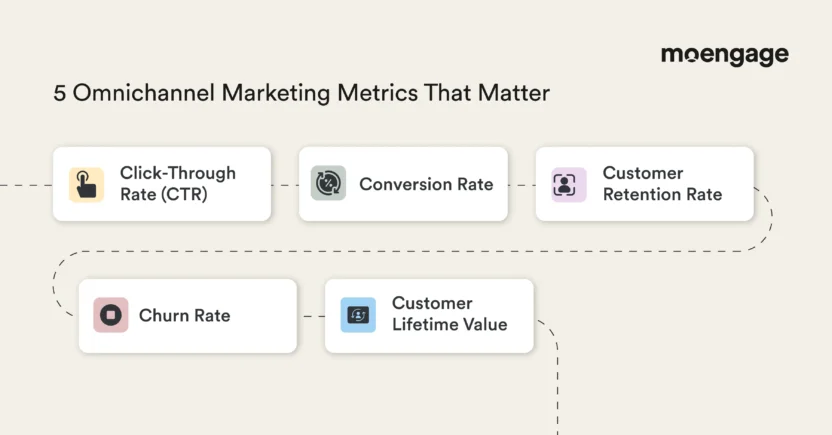
ROI can tell you how effective your omnichannel marketing efforts were versus the overall costs allocated to your campaign. And yes, there is solid evidence to show that omnichannel marketing enhances campaign ROI.
A study by Wharton School suggests that 2/3rds of shoppers use more than one channel to make their purchase decisions. An omnichannel approach makes this possible by creating a cocktail of favorable factors.
First, it delivers consistent messaging across channels, which strengthens your brand’s positioning and credibility in the customer’s mind.
Secondly, it helps integrate data across channels. Thirdly, it optimizes the marketing funnel for real-time, relevant messaging. Sometimes, a soft nudge at the right time on the right channel is all your customer may need to complete that purchase.
There are many metrics that can measure how well your omnichannel marketing helps drive ROI. But here are 5 key metrics you should ideally analyze:
- Click-Through Rate: Click-Through Rate or CTR tracks how many customers have actually clicked on a marketing message they opened or viewed. For omnichannel campaigns, it would show which channels generated better engagement, highlighting preferences. If CTR is low, it probably means that the messaging was either not relevant or enticing enough to be clicked.
- Conversion Rate: Conversion rate measures how many visitors complete a conversion event, whether it is a purchase or a simple account sign-up. This is a strong indicator of how robust your journeys are. In the omnichannel context, this metric can relay information about which channels work better for different journeys.
- Customer Retention Rate: Customer Retention Rate indicates how many customers your brand was able to retain in a specified period, signifying long-term engagement and growth. Comparing retention rates across channels can help you identify which channels are not performing and accordingly optimize campaigns.
- Churn Rate: Churn rate denotes how many customers the brand lost over a specified period. Any increase or decrease in this metric signals that brands need to fine-tune their omnichannel approach—be it changing the channel, timing, messaging, frequency, or visuals. For omnichannel marketing, churn rate offers interesting insights across customer journeys to identify where drop-offs are occurring and help mend the leaks.
- Customer Lifetime Value: This metric tells you the average amount someone could spend on your brand while being your customer. For an omnichannel marketer, CLV is a great indicator of the brand’s strategic success and long-term growth. For instance, by comparing CLV across channels and customers, you can identify your most valuable customers, refine your personalization strategy for those customers, and enhance engagement and conversions.
Get a more elaborate view of more omnichannel metrics, formulas to calculate them, and best practices for using this data effectively.
6 Omnichannel Marketing Examples from Top Brands
If you’re really curious about how to create an effective omnichannel experience, there is no better way than to see how leading brands do it. While there are plenty of omnichannel marketing examples worth noting, here we stick to the top 6 from different industries.
1. Bank of America’s intelligent banking boosts engagement
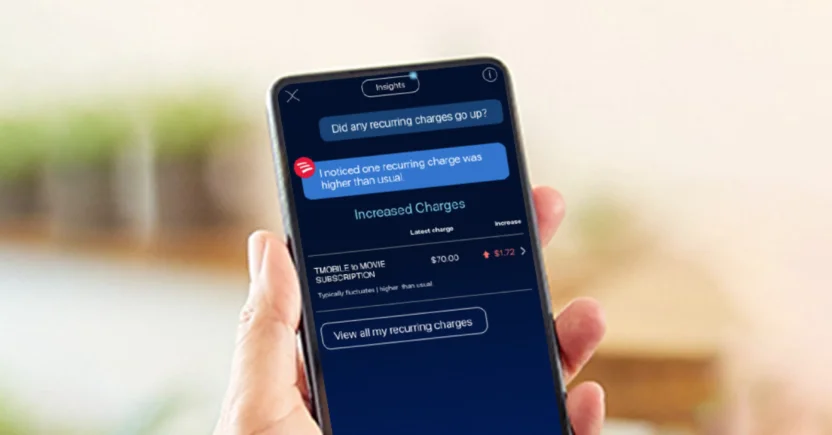
Source: https://info.bankofamerica.com/en/digital-banking/erica
It’s interesting to learn how the banking industry is leveraging omnichannel marketing. Bank of America, for instance, offers its customers real-time financial alerts across channels, along with instant support with its AI-powered virtual financial assistant Erica. The bank’s customers get a personalized, real-time view of their account balance, deposits, card usage, and more, so they can maneuver towards better financial habits.
By offering a rich omnichannel experience, Bank of America saw an 11% rise in engagement in a year due to more cohesive digital journeys.
Explore our article on the top trends of omnichannel marketing in banking and how to drive engagement.
2. Sephora’s truly omnichannel effort propels sales
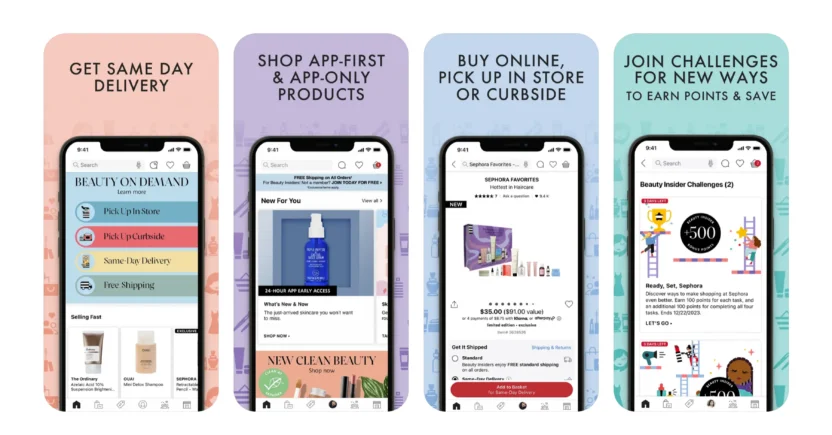
Source: https://apps.apple.com/us/app/sephora-us-makeup-skincare/id393328150
Omnichannel retail can be an interesting industry to understand how to create an omnichannel experience effectively. Speaking of which, Sephora focuses on staying customer-centric by allowing seamless transitions across channels.
For instance, the brand offers in-store makeovers to customers and then follows them up with a list of the products they can use, bridging the gap between exploration, trial, and purchase.
In addition, customers can use tools like Sephora Visual Artist to seamlessly transition between in-store and online experiences. They can scan products in the store and find out more about them, get virtual-try-ons powered by AR, and more. These omnichannel efforts by the brand have helped the brand clock in record earnings in 2024.
While you’re at it, learn how to build an omnichannel retail strategy and measure its success.
3. Walgreens’ mobile app lifts customer experience and sales
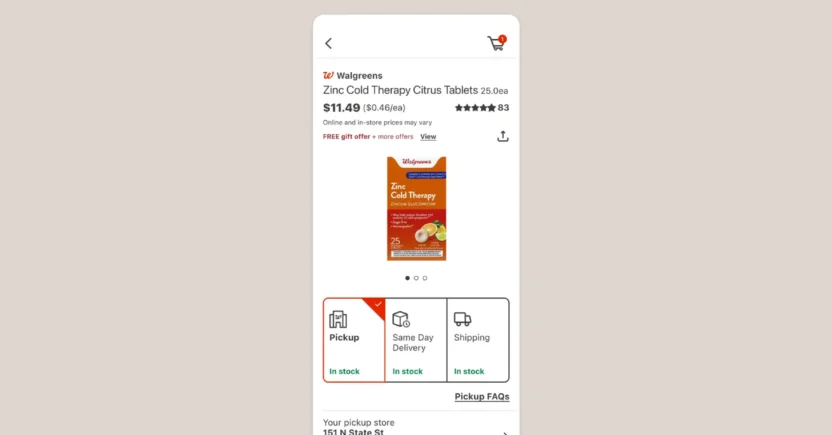
Source: https://apps.apple.com/us/app/walgreens/id335364882?platform=iphone
Walgreens is a noteworthy example of why omnichannel matters in Ecommerce. Despite its wide reach in physical stores, Walgreens struggled to keep up with the demands of managing its store inventories. So, the brand designed an app that helped meet customer demands at various touchpoints, leading to increased convenience and lower wait times. For instance, customers could raise requests for refilling prescriptions via the app and collect them in-store when they were ready.
Know more about how Ecommerce brands can reap the benefits of omnichannel marketing.
4. Disney’s omnichannel experience makes all things magical
Disney is an interesting example of how entertainment brands can create magic using omnichannel marketing. By combining multiple touchpoints, Disney has designed an immersive and cohesive experience for customers, making it super convenient for them to enjoy their parks and hotels.
It all starts with the My Disney Experience online, where customers can plan their trip and manage their bookings, reservations, and experiences digitally. At the park, customers can navigate through the park using the mobile app and also use the MagicBand wristband, a hassle-free way to access rides, hotels, and amenities booked in advance.
5. Chipotle’s delightfully connected in-store and online channels
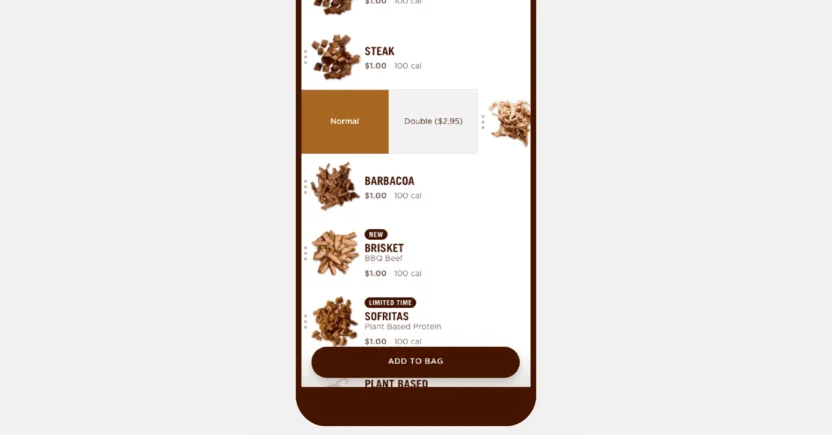
Source: https://play.google.com/store/apps/details?id=com.chipotle.ordering&hl=en_US
Popular QSR brand Chipotle is a stellar example of how to create an omnichannel experience for customers. This multinational restaurant chain allows customers to order on their app, which also tracks the customer’s location to let the restaurant know when the customer will arrive.
This way, the brand ensures fresher and warmer meals for its customers, adding to both customer delight and operational efficiency.
6. Travelodge’s real-time omnichannel notifications add convenience
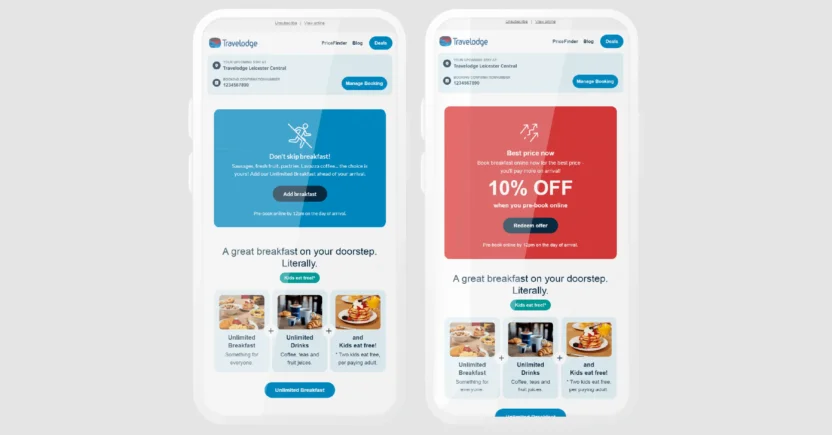
Omnichannel marketing for B2C enterprises should be a given today, especially if they want to truly engage their customers.
Take the example of Travelodge. Imagine you were a frequent traveler, in which case, you’d typically search and make bookings on a travel website. Travelodge makes it even more convenient for customers by enabling them to manage their bookings via its app. Further, the company sends real-time notifications regarding customers’ bookings across channels.
What’s more, booking details are also accessible and cancellable via a single click directly from emails. This way, the brand provides customers with frictionless omnichannel transitions and smoother travel booking experiences. In fact, partnering with MoEngage helped Travelodge achieve a 58% open rate and 47% CTR for their post-booking emails.
Interested in some more omnichannel insights on the travel industry? We got you covered!
And, if you’re exploring what omnichannel experiences can do for your D2C brand, feel free to dive into our guide.
Now that you know how the industry leaders do it, it’s time to start evaluating the tools you will need to kickstart your omnichannel journey.
Evaluating Your Options for Omnichannel Marketing Tools
It can be overwhelming to sift through hundreds of tools to finally arrive at what’s right for your brand. So, we’ve narrowed down a few must-have features to make your search a bit easier.
5 Features to Get in an Omnichannel Marketing Tool
Here are some key features you should look for in your omnichannel marketing software platform:
- Unified Customer Profiles: A key advantage of an omnichannel marketing software is the potential to be proactive rather than reactive. This is because it provides a unified view of every customer activity from each touchpoint, be it email clicks, website visits, and more. Your omnichannel marketing tool must enable you to have a complete view of customer profiles across channels
- Real-time Analytics: To fully leverage the benefits of omnichannel, your marketing tool must have real-time analytics and reporting capabilities. This means quick insights such as best time/channel to send and vital metrics like click-through rate, conversions, and more, so you can steer your campaign without losing time.
- Centralized Campaign Builder: One of the reasons why omnichannel matters in your marketing campaigns is that it touches upon every channel your customers may use. Here, a feature like a centralized campaign builder can let you set controls and launch from one place.
- AI-powered Personalization: AI can unlock huge benefits of omnichannel marketing, like hyper-personalization at scale. Selecting a tool with AI-based segmenting and dynamic content generation can take your personalization efforts up by several notches.
- Omnichannel Customer Service: Imagine a customer who has previously complained via email now calls for additional support, and your customer executive has no clue about it. So, the customer goes through the hassle of repeating the entire experience. This is a not-so-favorable scenario for your brand’s engagement. Hence, it is important to ensure that your omnichannel marketing tool offers a 360-degree dashboard of a customer’s interactions across touchpoints, be it social media, mobile app, or email.
Read more on the must-have capabilities of an omnichannel marketing software.
Key Criteria to Watch for in an Omnichannel Marketing Tool
So, you’re now acquainted with key features you should seek in your omnichannel marketing software. Below are some selection criteria that can help you further refine your search:
- Scalability: When choosing an omnichannel marketing tool, always go for one that can support you as you grow in terms of data volume, number of customers, and channels.
- Integration: Make sure your tool is easy to integrate with existing CRM, ERP, and other systems/platforms.
- Cost vs. benefit: Ensure that the omnichannel tool can offer you the required ROI, where benefits exceed costs.
- Documentation & support: Evaluate if the tool comes with requisite documentation and customer support through onboarding, implementation, and more.
- Compliance & security: Check if your chosen tool adheres to regional privacy laws and has strong security controls.
The above lists are not exhaustive; however, if you’re a marketer looking to start your omnichannel journey, your chosen software will need to meet these basic criteria.
If you’re looking for a cross-channel engagement platform, MoEngage can be the best omnichannel marketing tool for your brand. It has an intuitive UI that makes it super easy to use, advanced AI capabilities, and data-led, real-time engagement capabilities across channels—all on one single platform.
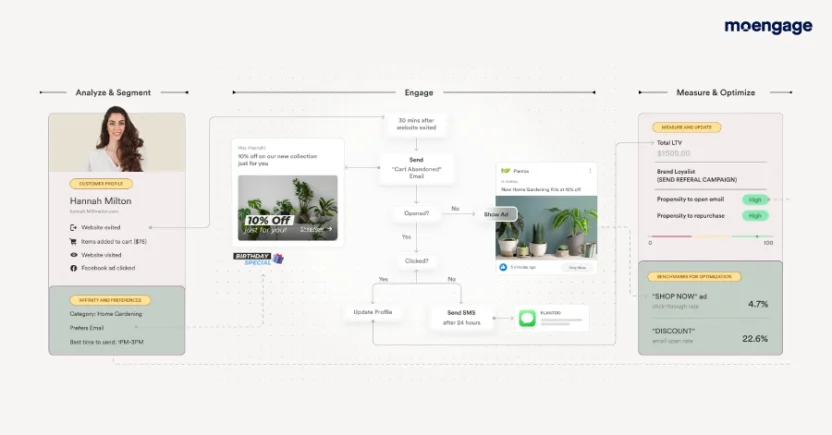
What’s more, you can make the most of MoEngage’s Sherpa AI and Merlin AI for generating content, predicting the right channel and messaging, and personalizing journeys with end-to-end automation.
However, if you prefer a deeper dive into evaluating your options, we also have a full guide on how to make the right omnichannel tool selection with a list of the top 5 tools.
Top Omnichannel Marketing Trends & Stats
At MoEngage, we surveyed employees from 221 enterprise brands with more than 1001 employees and smaller brands. We analyzed responses related to various aspects of cross-channel enterprise marketing. Respondents primarily comprised team leads, VPs, C-level management, and directors.
Here’s a glimpse of our key survey findings:
- Increasing customer engagement or loyalty is more important than finding new customers for enterprise brands: Among the top priorities for enterprise brands, 47.5% said that boosting engagement is a greater priority for them than acquiring new customers (44.3%). This figure portrays that while finding new customers is still important, more brands are focusing on creating truly engaging experiences for existing customers to take them further in their purchase journey and see tangible business outcomes.
- Delivering personalized experiences is a top challenge: According to the survey data, 38.9% of B2C enterprises said that they struggled with delivering personalized experiences, given that these brands cater to a diverse and huge customer base. Despite access to advanced technologies, enterprise brands perhaps struggle with the complexities of integration and scaling across multiple channels. This showcases the need for easy-to-use cross-channel personalization tools like MoEngage, which help create tailored journeys at scale.
- AI integration: It came as no surprise that a whopping 95.4% of B2C marketers are using AI in their omnichannel campaigns in 2025. In the omnichannel context, this highlights the massive potential of AI in automating tasks, scaling, and hyper-personalizing experiences. AI automation can directly translate a smart omnichannel strategy to outcomes like higher ROI.
- Email remains the top channel used by brands and is seen as most effective: As per the survey, the top five channels B2C marketers are using across industries (like banking, ecommerce, and QSR) are Email (82.4%), Social Media (66.7%), Mobile Website (58%), Desktop Website (52.7%), and Mobile App (51.6%). However, they are likely to prioritize mobile apps going forward, given the greater customization and branding opportunities that apps offer. This also emphasizes the shift to mobile marketing by larger brands, who wish to use more integrated and customer-centric approaches.
- Real-time personalization through mobile apps: An increasing number of brands are using omnichannel personalization based on customer journey stages. For instance, banking apps are sending tailored reminders to customers when bills are due via email, while sending timely push notifications when the date is closer to avoid late fees. This makes sense given the massive amount of data enterprise brands like some major banks may have access to. Moreover, this level of personalization across channels not only adds to the overall experience but also expands the scope for higher engagement and conversion, for instance, using the bank’s app itself in paying the bill.
Get more findings and raw data by checking out our report on the State of Enterprise Cross-Channel Marketing.
Omnichannel Marketing Guide for B2C Brands: Concluding Thoughts
A rich omnichannel customer experience is a blend of many things—robust data analytics to predict customer behavior, dynamic hyper-personalization based on this analysis, and accordingly optimized campaigns across different touchpoints.
Every brand needs an omnichannel marketing tool that can do the heavy lifting and lower the cost, time, and effort to ensure all the boxes are ticked. MoEngage’s cross-channel marketing engagement platform truly adheres to the omnichannel definition, so your brand can deliver effortless omnichannel campaigns.
Schedule a demo to see how MoEngage can help you propel your brand’s omnichannel marketing efforts.












